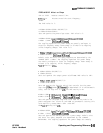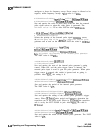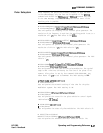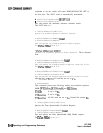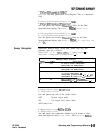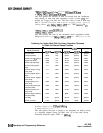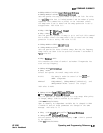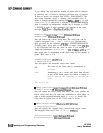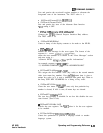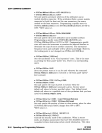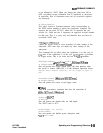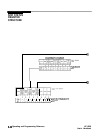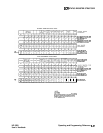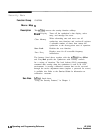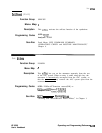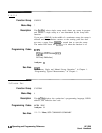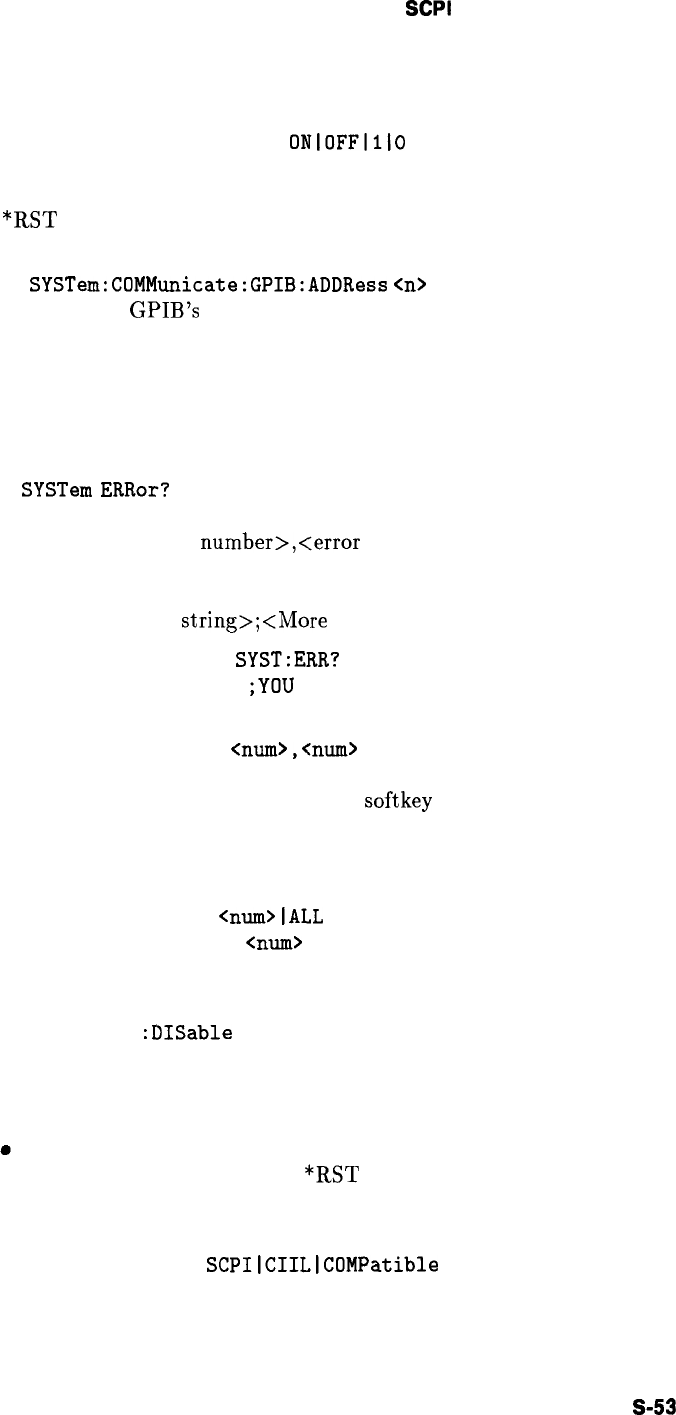
SCPI
COMMAND SUMMARY
HP 8360
User’s Handbook
Sets and queries the save/recall register number to alternate the
foreground state of the instrument. The *RST value is 1.
l SYSTem:ALTernate:STATe ONlOFFlllO
l SYSTem:ALTernate:STATe?
Sets and queries the state of the Alternate State function.
*RST
setting is OFF.
l
SYSTem:COMMunicate:GPIB:ADDRess
<n>
Changes the GPIB’s (General Purpose Interface Bus) address.
The *RST value is 19.
l
SYSTem:DUMP:PRINter?
Causes a dump of the display contents to be made to the HP-IB.
l
SYSTem
:
ERRor?
Returns the next message in the error queue. The format of the
response is :<error
number>,<error
string>
where the error number is as shown in the “Error Messages” section
and error string is :
“<Generic HP-SL
string>;<More
specific information>”
An example response to
SYST:ERR?
is
-23, “NUMERIC OVERFLOW
;YOU
PUT IN A NUMBER TOO BIG”
l SYSTem:KEY:ASSign
<num>,<num>
This assigns the first numeric value (key code) to the second numeric
value (user menu key number). Every
softkey
menu item is given a
unique key code (as if it were a dedicated front panel key). Refer to
the entry SCPI KEY NUMBERS for a listing of key codes.
l
SYSTem:KEY:CLEar <num>lALL
Clears the user menu. If
<r-mm>
is sent, only that particular key
number is cleared, If ALL is sent, all menu keys are cleared.
l
SYSTem:KEY
:DISable
SAVE
The save key grouping is disabled. In our box this disables the save
state feature. (Save Lock)
a SYSTem:KEY:ENABle SAVE
Unlocks the save registers. The
*RST
value is for the save registers
to be enabled.
l
SYSTem:LANGuage
SCPIlCIILlCOMPatible
Causes the synthesizer to perform a language switch to another
language system.
Operating and Programming Reference
S-53



